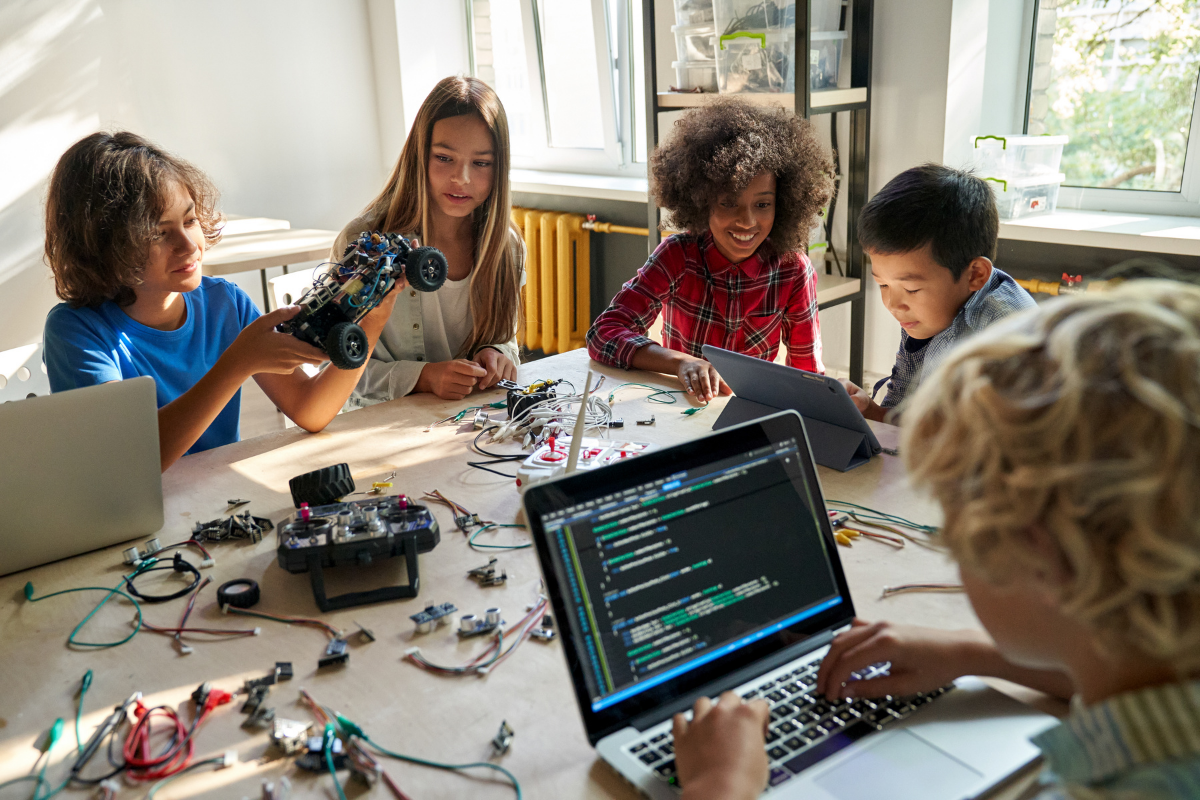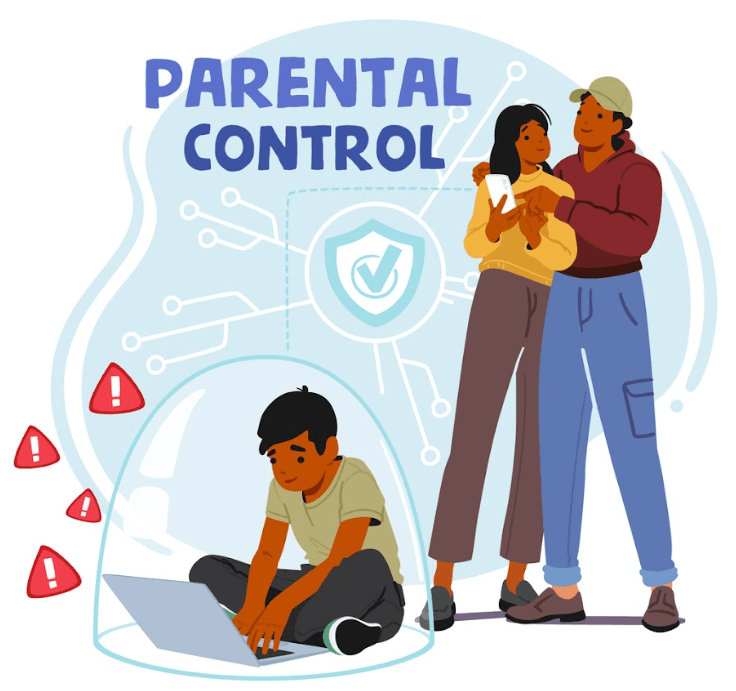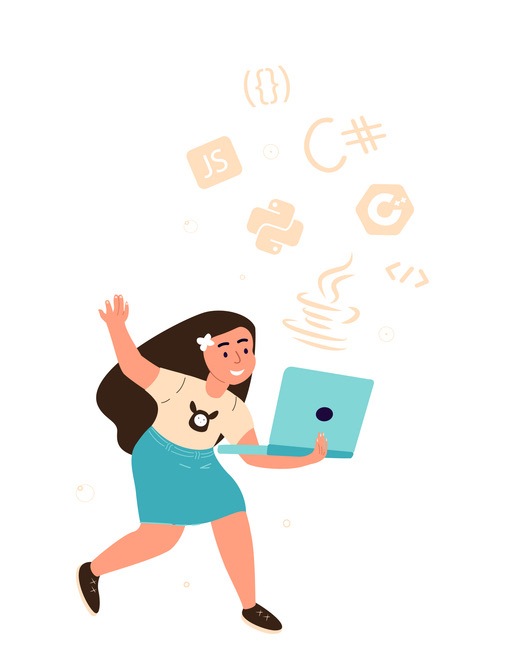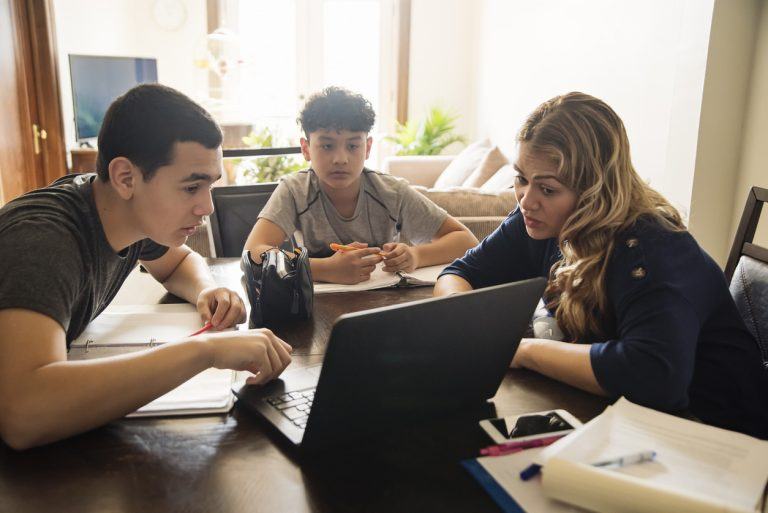Many parents often wonder when their kids should begin to learn to code.
“Can my kid start at 7?”
“Is it too late if he’s already in high school?”
“At what age can my kid actually start coding?”
These are a few of the questions we often hear from parents all over the world. That’s why we put this helpful guide together: to help parents figure out the best time for their kids to start coding!
As you might have guessed from this article title, we believe the best time for kids to start coding is when they are in middle school. It’s the perfect age to start — not too young, and not too old.
Does this mean a kid is destined for failure if he starts before or after middle school? Absolutely not! Remember: there are many kinds of coding programs out there, and each one is a little bit different. Some programs work better for kids in younger grades, and other programs are best for kids in high school. No matter how old your kids are, they can still learn how to code!
That said, we still think that middle school is the optimal time to start learning how to code. We’ve highlighted a few different reasons why we believe this, plus some of the benefits of learning at this time of life:
Table of Contents
Learning to Code Can Spark Kids’ Interest in Computer Science
Kids’ first interactions with computers might be taking place earlier and earlier in life, but the idea of computers can be a bit tricky for kids in elementary school to fully grasp. Middle schoolers, on the other hand, usually have at least a basic understanding of not only how computers work, but also their software, apps, and games.
In a blog article published by Penn Engineering Today, middle school students showed that they have a pretty good understanding of how computer programming works. When students asked why they wanted to join a club called “Girls Who Code,” some said they wanted to be able to create and code their own games. Some even said they want to become hackers!
Middle schoolers aren’t only interested in learning to code because it “looks fun.” Many students at these grade levels are genuinely interested in the subject and are curious enough about it to want to learn more about it.
By enrolling your kids in a coding program, you may not only help them acquire new and useful skills but may potentially help ignite their passion for learning and supercharge their minds as they dive into a new and interesting subject.
Learning to code can expand a kid’s interests beyond basic computer science. There are many subjects even within this area that are closely tied to coding that kids may be eager to explore further as they are learning. We’ve listed three examples below:
Web Development

If your creative kid has an eye for design, web development might be a fun new path for them. Besides learning how to code and building a website from the ground up, plenty of coding programs out there also encourage kids to exercise their creativity and design their own simple websites.
Computer Engineering
Computer engineering may seem like a bit of an advanced subject for a middle schooler, but enrolling them in a coding academy while they are in middle school can still open them up to new possibilities and inspire them to pursue a degree in the subject when they reach college age. Even though most coding programs only briefly touch on the subject, providing kids with a basic understanding and fundamentals of programming can help them in the future in a variety of subjects – not just engineering, but areas like robotics, machine learning, and more.
Game Development
If your kid is enrolled in a coding program, they may move on from just playing video games, to actually making them! Besides writing commands and code for a computer game, there are many other aspects to work through that help make a game fun and playable for players. Enrolling your middle schooler in a coding program might help them figure out how they would want to create their own game. For example, middle schoolers could come up with their own storylines, decide how they want to sequence each mission, and figure out which buttons a player might need to press to fight bosses, complete tasks, race cars, or whatever their game calls for!
Maximize their Potential to the Fullest

Younger kids may have a hard time understanding big concepts and analyzing some of the models when learning to code. Middle school-age kids, however, can much more easily digest basic coding concepts and build upon them to learn a more complicated subject.
That said, enrolling your child into a coding program can help them explore complex topics and learn how to code and solve problems like a real professional. Besides learning coding basics, they can move on to learn block coding — and maybe even learn entire coding languages. Here are some of the more common languages kids learn:
Python
Many middle school programs now teach kids how to code in Python. Since it is one of the most popular coding languages today, coding programs have started including it in their curriculums. Codakid, for example, teaches kids how to code in Python through a variety of exciting games and fun projects.
Java
Like Python, Java is also a high-level programming language used by real coders and professionals today. If you enroll your kids in a program while they are still in middle school, they would be able to learn how to understand and write text-based Java all on their own. Many coding programs like Codakid now use familiar computer games like Minecraft to make Java much more interesting and easy to digest for kids.
JavaScript

The JavaScript coding language is one of the most in-demand and lucrative skills in the job market today. JavaScript basically makes up more than half the content you see on the web! It is the coding language that makes web pages interactive, or clickable. If your kid is able to dive into JavaScript and master this coding language, it can open up many doors for them in the future and help them secure a great job in a competitive market.
Make them Fully Understand the Basics
When a subject — like coding — is too overwhelming and hard to understand off the bat, many kids tend to quit halfway through a course or a program. It’s easy for younger kids to gloss over coding basics and fundamentals and have a hard time really absorbing and understanding how coding works and what it’s all about.
Block coding, for example, is easy for young kids (even younger than 7 years old!) to figure out when making cool animations and creating their own games, but they might miss that block coding is about a little more than just those things.
Block coding primarily exists to help kids master the fundamental concepts behind programming, like commands, loops, conditions, control structures, and more. If kids don’t master these concepts upfront, it is hard for them to move forward in the learning process and tackle more advanced concepts, and especially difficult to learn a coding language!
Middle schoolers usually have much better cognitive skills and a better understanding of computational thinking, which makes it much easier for them to fully grasp fundamental concepts of coding languages. Examples of this include:
Syntax
Syntax is important in any language, and coding languages are no exception! Without proper grammar, we would have a difficult time understanding when a person is speaking to us. Writing code is set up the exact same way, but the person speaking is the one writing code, and the “listener” is the computer. Without proper syntax, the computer has no idea what you’re trying to say.
Kids in middle school are much more familiar with syntax in a speaking language sense and are much better verbal communicators and writers than students in younger grades. Since they are much more familiar with grammar, they can apply these same principles to coding as well.
Variables
Kids are often not exposed to “variables” in elementary school, so they may have a hard time understanding them in the coding sense at a young age.
Based on our observation, many of these younger kids will simply memorize and copy the codes they learn without really understanding exactly what they mean and what it is that they do. One of the best ways to do this is by having them look for the variables in their code. Middle school-age kids and older tend to get much more creative every time they use variables in coding, but younger students will often copy the variable given without branching out.
Boolean Logic

Whether your kids are studying STEM subjects or not, they are likely able to understand Boolean logic if they are at the middle school level. At its most basic, Boolean logic is centered around 3 key phrases: “or,” “and,” and “not.”
If your kids are not able to grasp this concept, THEN they will have a hard time moving on to more advanced topics. Boolean logic AND syntax often go hand in hand, so if your kids do NOT understand one OR the other, THEN they cannot learn to write their own code.
This is a big reason why middle school and high school students tend to perform better than younger kids in many online coding classes.
Control Structures

Control structures are simply the building blocks of every single computer program. Think of it as a matrix, or maybe an organizational structure. Younger kids have a hard time grasping this concept and it is oftentimes too complex to wrap their heads around it. If kids are unable to understand syntax or Boolean logic, they will not be able to understand control structures.
Once kids are at the middle school level, they are much more likely to progress in coding classes as they are more likely to be familiar with these concepts. Knowing how control structures work is a key difference between students at beginner coding levels and students who are much more advanced.
Conclusion
As you can probably see by now, we believe that middle school is the ideal time to enroll your kids in a coding program. At these ages, kids are likely at least a little familiar with many of the concepts related to computer programming and are usually a bit more open-minded than their younger counterparts. They’re often more interested in diving into a new subject and being creative while doing so.
While it’s never too early — or too late! — to start learning to code, enrolling in a coding program in middle school can set your kid up for success and have them coding at advanced levels before you know it.

















